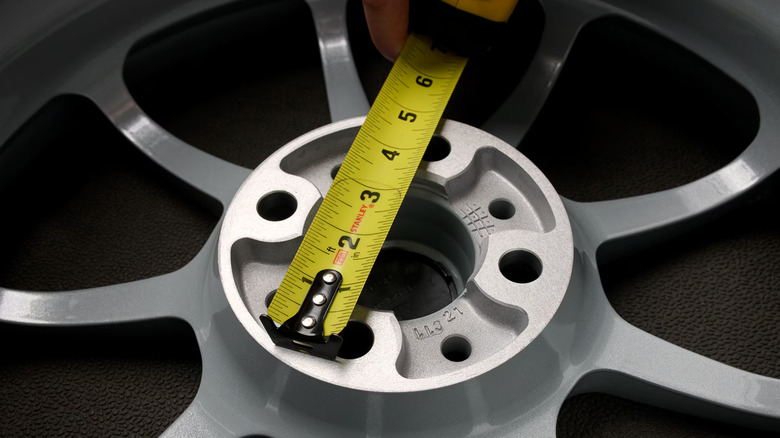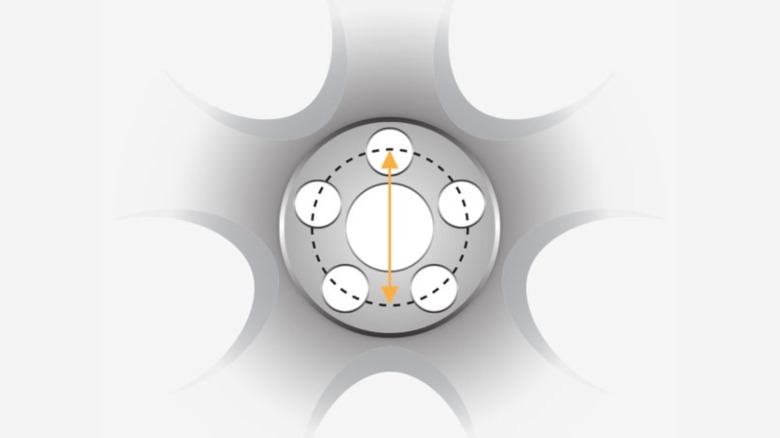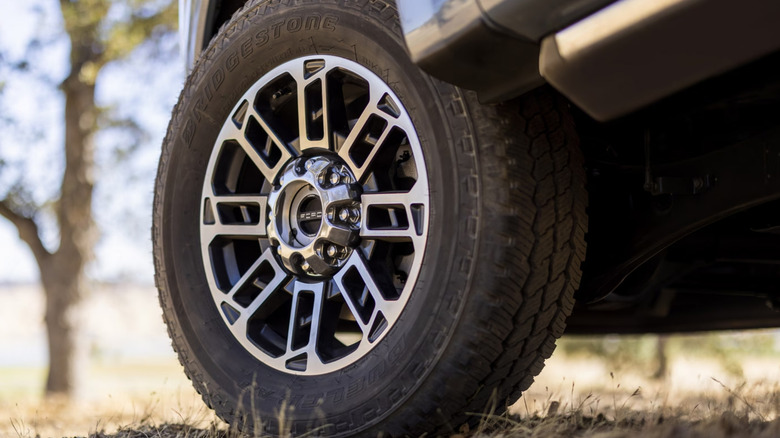Here's How To Properly Measure A Wheel Bolt Pattern (And Why It's Important)
We usually don't pay attention to our wheel's bolt pattern that often but it is an important thing to know since every car has a different bolt pattern. The wheel bolt pattern is the number of lug holes and the distance between them. This can be calculated easily by using simple measuring tools, but we need to understand the term PCD first. PCD stands for pitch circle diameter, or the diameter of the circle which is passing through the center of all the bolt holes.
Now, depending on the number of lug nuts, which you should always torque properly, the measurement techniques can vary but in generality, you need to determine the distance from the center one lug bolt to one across from it. For more accuracy, you can measure the distance from the outside edge of one lug hole to the inside hole of the lug hole directly across from it. If the distance is 100 mm then your bolt pattern is 4x100.
This is easy for wheels with an even number of lugs but things get a little complicated for an odd number of lug bolts. For a wheel with 5 lug bolts for example, there are no two lugs sitting right across each other to determine the PCD. For this, we have to create an imaginary lug hole right across and measure. This can give us a near about idea of the PCD, but it's not the true measure.
Good thing is, if you want to know the bolt pattern of your vehicle, it is easily available online and also listed in your owner's manual, but to measure the bolt pattern of a wheel, you will have to take out the scale.
Why it's important to know your wheel bolt pattern
This is especially useful when you are considering buying a new set of wheels. You might have noticed that many aftermarket wheels also list the wheel bolt pattern along with the diameter of the wheel. Larger vehicles tend to have more bolts, while smaller vehicles can do away with fewer bolts. This is also the reason why we cannot fit any wheel onto any vehicle.
Vehicles tend to have different bolt patterns because they're all made with a different purpose. Larger trucks and SUVs have more bolt holes because they are usually heavy and used for towing. A lot of torque is needed and more bolts help distribute the forces evenly. More bolts also increase the stability of the vehicle which might be required for high performance vehicles. This all depends on what the manufacturer thinks the vehicle's use case will be, but it also comes down to the cost of development and parts.
However, when buying new wheels from major brands or adding wheel spacers, one needs to make sure that they have the right bolt pattern so they fit onto the vehicle, and that is why it is necessary to know the bolt pattern.


